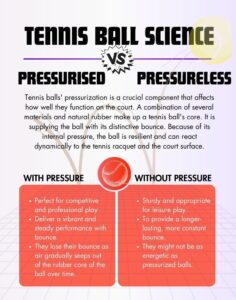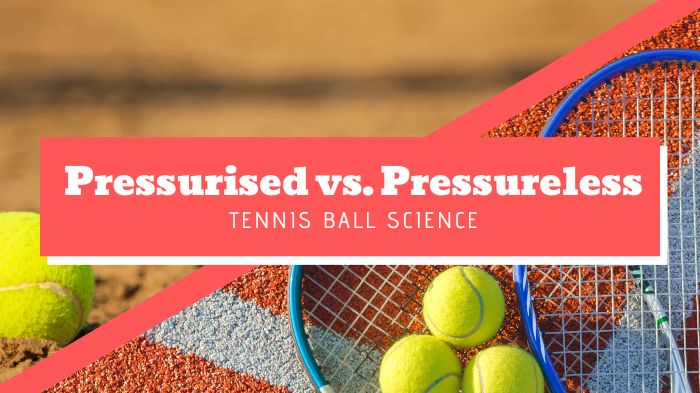Tennis is a graceful, intense sport that depends on special equipment, the tennis ball being one of the most important components of the setup. Tennis ball pressurization is one feature that frequently piques the interest of players and enthusiasts alike. Let’s examine the causes of pressurization, the differences between pressurized and pressureless balls, and how to prolong the life of these crucial game elements.
Why Is There Pressure on Tennis Balls?
Tennis balls’ pressurization is a crucial component that affects how well they function on the court. A combination of several materials and natural rubber make up a tennis ball’s core. It is supplying the ball with its distinctive bounce. Because of its internal pressure, the ball is resilient and can react dynamically to the tennis racquet and the court surface.
Does Pressurisation Make Tennis Balls Need It?
Yes, tennis balls require pressurization. The ball would only have the necessary responsiveness and bounce with adequate pressurization, greatly affecting the play’s overall quality. The ball retains its energy during rallies and reacts precisely to player force thanks to its pressurized core.
Why Do Tennis Balls Come in Pressurised Cans for Packaging?
Pressurized cans package tennis balls to keep their integrity until needed. The can’s airtight seal maintains each ball’s internal pressure, preventing the balls from losing their bounce too soon. This packing technique keeps tennis balls in top shape and prepares for an exciting game when players open the can.

Balls: Pressurised or Non-Pressurized:
Tennis balls come in two primary varieties: pressureless and pressurized.
Tennis balls with pressure:
Perfect for competitive and professional play. Deliver a vibrant and steady performance with bounce. They lose their bounce as air gradually seeps out of the rubber core of the ball over time.
Tennis balls without pressure:
sturdy and appropriate for leisure play. They do not have an internal pressurized core and are made of solid rubber to provide a longer-lasting, more constant bounce, although they might not be as energetic as pressurized balls.
What Is the Duration of Pressurised Balls?
The life of pressurized tennis balls is short. As air leaks out of the center, their bounce steadily decreases, which impacts their overall performance. Professional players usually change the balls every seven or nine games to guarantee a lively and constant bounce.
Are Dead Tennis Balls Pressurised?
Though developments such as the “PressureBall” claim to slow the pressure loss rate, restoring a tennis ball to its initial pressurization level is impossible. Because they limit the air’s escape through the rubber core, these devices can prolong the life of pressurized balls.
Optimal Applications
Inflatable tennis balls: Perfect for professional matches, tournaments, and competitive play when a vigorous bounce is essential to fair and interesting competition.
Tennis balls without pressure: Ideal for casual play, drills, and situations when the ball’s resilience and steady bounce are more important than its vivacity.
Can the Loss of Bounce in Pressurised Balls Be Stopped?
Innovations like the PressureBall attempt to address the problem of pressurized balls losing their bounce by slowing down the natural air release process. For frequent players, these devices offer a cost-effective alternative as they can prolong the functional life of tennis balls.
Tennis Balls No Longer Lose Their Bounce With PressureBall:
Tennis balls lose some of their bounce and eventually deteriorate. The PressureBall is a pressurized tube that helps slow down this process. Players may benefit from a longer time of excellent performance from their pressurized tennis balls by simply inserting spent balls inside the tube.
Last Words
Gaining an understanding of the science underlying pressured and pressure-free tennis balls enhances one’s awareness of the sport’s complexities. Your tennis experience may be improved by selecting the appropriate tennis ball and using cutting-edge technologies like the PressureBall, regardless of whether you’re a professional player looking for the ideal bounce or a casual enthusiast enjoying a friendly match. Accept the science and technology that go into these little but important aspects of the game to ensure every game has the dynamic energy and excitement that tennis is known for.

